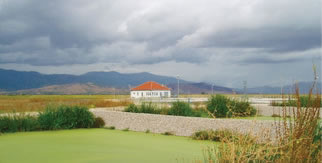
Environmental Science and Engineering
State of the Science: Review of Quantitative Tools to Determine Wastewater Soil Treatment Unit Performance
Publication Date: June 2009 (Interim Report)
Cooperating Institution: Colorado School of Mines
Principal Investigator:John McCray
Project Budget: $1,390,116 (Entire project)
Project Identifier: DEC1R06
DESCRIPTION
A literature review was conducted as part of a larger research project to assess soil treatment unit (STU) performance in treating important wastewater constituents. Data were compiled from published field and laboratory studies relevant to fate and transport in soil of nitrogen (N), phosphorus (P), microbial pollutants, and emerging organic wastewater contaminants (OWC). The literature review also identified current best practices for using models and other tools to predict STU performance. The review demonstrates the variability of data collected at different field sites, and suggests that simple binary relationships (e.g., the ratio of a contaminant in soil to that in effluent, C/Co, versus depth for various soil types) cannot accurately predict the attenuation of wastewater constituents in soil. In addition, many of the parameters that effect contaminant fate and transport in soils are not measured in available field studies. Most models for N and P fate and transport have been developed for agricultural applications, rather than for soil treatment of wastewater. However, the CW2D model contains many of the transformation processes relevant to STU performance and it may be possible to adapt the model for that use. Attempts to model microbial transport in soils have been hampered by the current incomplete understanding of the role of soil chemical and physical properties in transport and attenuation. Differences among the OWC, both in transport and treatment processes, suggest that no single model or modeling approach will be appropriate for all chemicals in this group.
Associated Documents:
See also: Qualitative Tools to Determine the Expected Performance of Wastewater Soil Treatment Units

